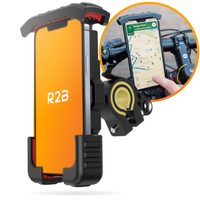No Products in the Cart

How do you find the right size running vest?
Time to read 1 min
Time to read 1 min
A well-fitting running vest is essential for comfort and performance while running. It prevents chafing, stabilizes your gear, and allows you to easily reach water and nutrition. But how do you determine the right size? In this article, you will discover what to look for when choosing a running vest.
A running vest should fit snugly to your body, but should not restrict your freedom of movement. A vest that is too big will slide around while you run, causing irritation and chafing. A vest that is too tight will restrict your breathing and can be uncomfortable during long distances.
To find the right size, follow these steps:
Measure your bust – Use a measuring tape and measure directly under your armpits across the fullest part of your bust.
Compare with a size chart – Manufacturers often provide a size chart that links bust size and vest size.
Consider your gear – Do you often wear a thicker shirt or jacket under your vest? Then opt for a little more space.
A running vest with lights should be tight enough to not move while you run, but loose enough to breathe comfortably. Test the vest by putting it on completely filled and doing a few jumps. Does it stay in place without pinching? Then you have the right size.
The size of your running vest also depends on your running distance and what you want to take with you.
Short distances (<10 km) – A 2-5 liter vest is sufficient for water and small items.
Medium distances (10-42 km) – A 5-8 liter vest offers enough space for extra food and clothing.
Ultra running (>42 km) – Choose a vest of at least 8-12 liters with room for hydration bladders, extra nutrition and emergency equipment.
In addition to size and storage capacity, there are other factors that influence your choice:
Adjustable straps – Ensures a snug fit.
Ventilation – Prevents overheating.
Waterproof compartments – Protects your gear from rain and sweat.
Hydration System Compatibility – Some vests only support soft flasks, others have room for a hydration bladder.
Choosing the right running vest starts with measuring your chest size and comparing it to the manufacturer's size chart. Make sure the vest fits without pinching and suits your running style and distance. With a well-fitting vest you run more comfortably and get more out of your training!

